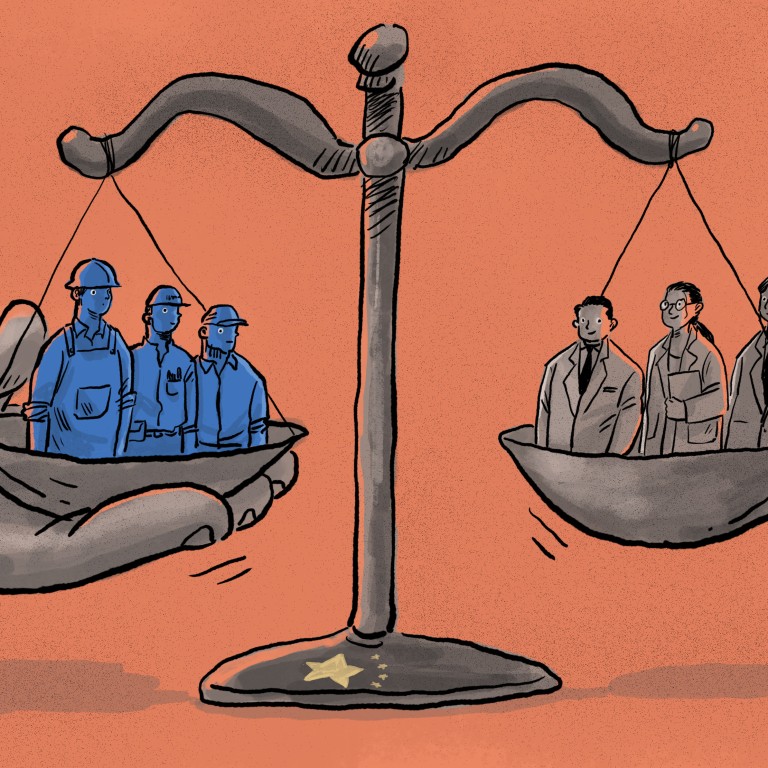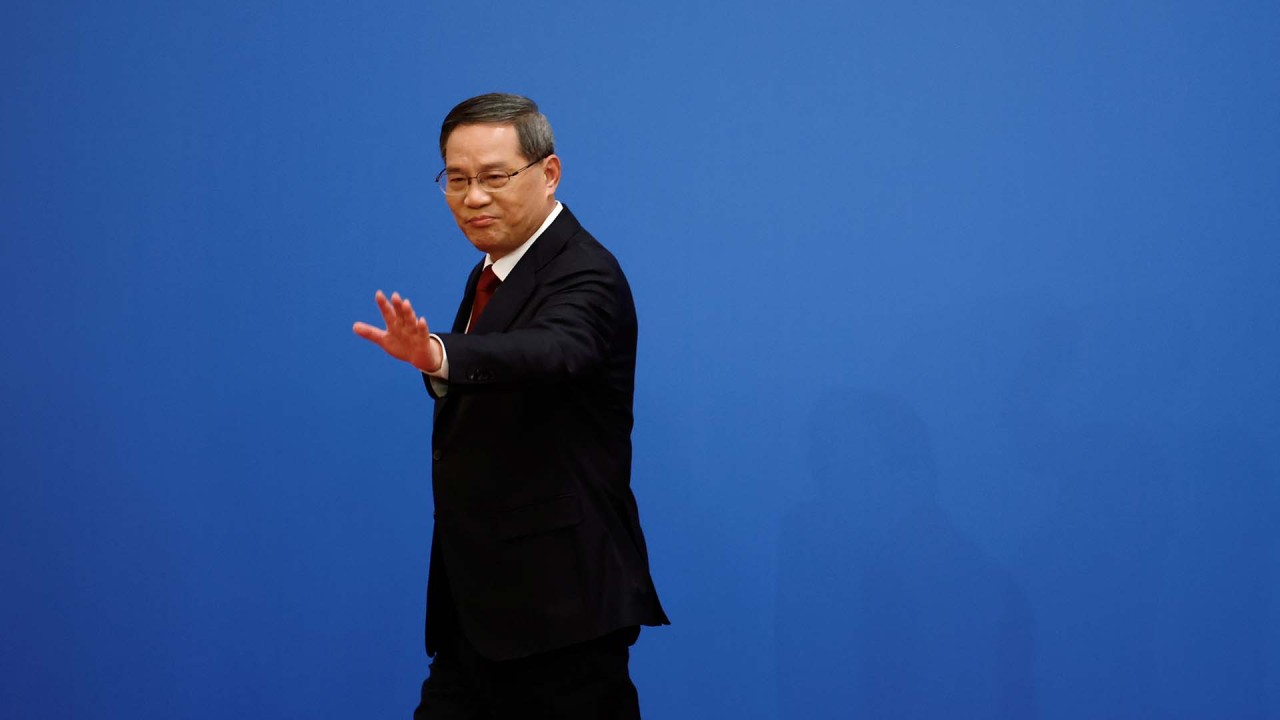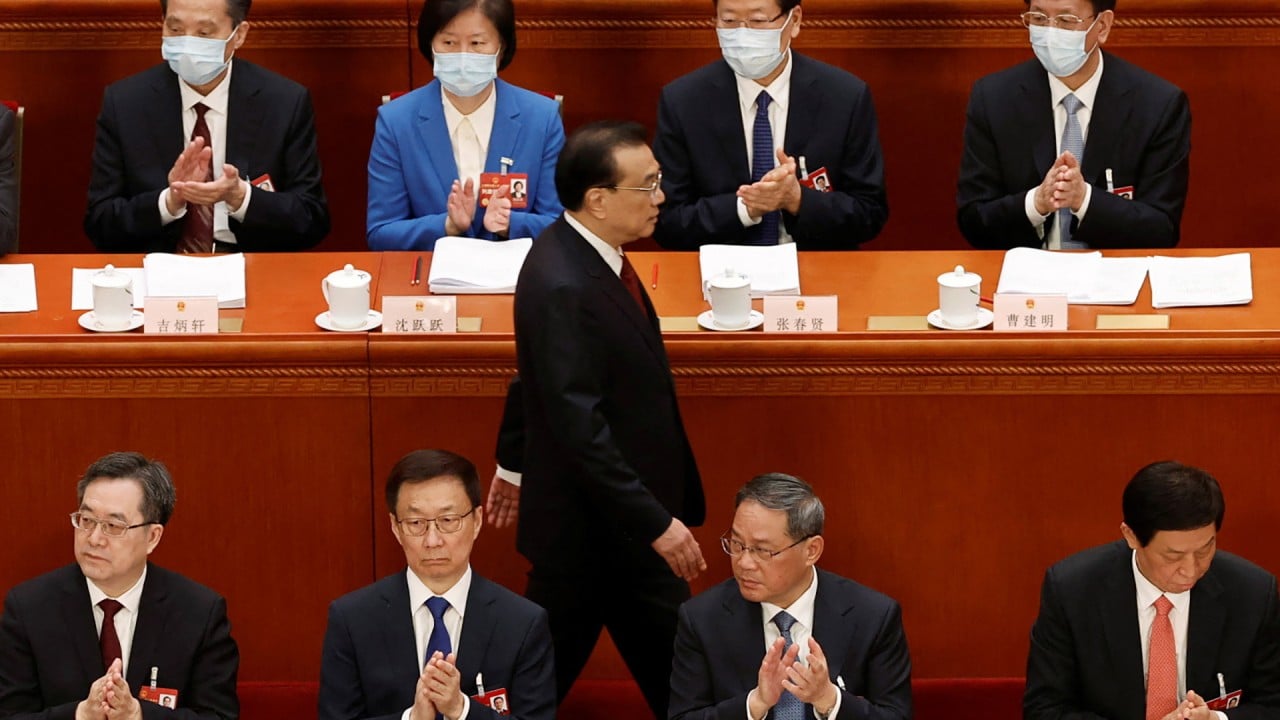
China jobs: Beijing urged to reform vocational education and end discrimination to plug skilled worker gap
- China’s skilled worker shortage was a hot topic of discussion last week during the country’s annual parliamentary meetings known as the ‘two sessions’
- Two lawmakers say China must tackle long-held perceptions that technically skilled jobs are inferior and ensure training meets changing trends in manufacturing
China must break down the stigma surrounding vocational education and open up new pathways for academically gifted students if it aspires to become a powerhouse in advanced manufacturing, according to lawmakers and policy advisers who took part in the recent “two sessions”.
The world’s second-largest economy needs to address challenges including low enthusiasm among young people towards vocational training, social discrimination against graduates, and a mismatch between the demands of firms and the training offered by schools, the delegates said.
Li Xiaoxuan, a delegate of the National Committee of the Chinese People’s Political Consultative Conference (CPPCC), said Beijing needs to break social prejudice towards vocational graduates.
Can China’s ‘out of touch’ vocational system fill blue-collar void?
Data provided by Li, who is also executive president of Yunnan Technology and Business University, showed that only 1.4 per cent of jobs available in last year’s national civil service exam were for vocational school graduates – a marked contrast with the 92.5 per cent offered to university undergraduates.
“[This shows] that the so-called first-degree discrimination faced by junior college students still exists, and I suggest public institutions and state-owned enterprises take the lead in breaking down the threshold of academic discrimination,” Li said in an interview with the Post.
China has pushed hard to develop its expertise in smart manufacturing, big data, biomedicine and new energy in recent years. But an oversupply of service majors from vocational colleges has resulted in an increasingly severe mismatch between labour supply and demand, Li said, making it difficult for companies to recruit skilled workers and graduates to secure jobs.
“The fact that vocational schools are ranked last in terms of enrolment has led to a perception that only students with no prospects of getting into a bachelor’s degree would choose to enrol in vocational institutions, which has resulted in declining recognition,” said Li.
Only 6.8 per cent of China’s total undergraduate student body and 9.3 per cent of undergraduate enrolments were made up of those pursuing vocational education in 2021, said Li.
By 2025, there will be a shortage of nearly 30 million workers in the manufacturing sector, according to the Ministry of Education.
Because many students enrolling in vocational courses had weak educational bases or struggled to learn, some institutions have started making compromises by reducing the quality of courses, Li said.
“In Jiangsu province, 33.6 per cent of vocational school graduates actually fail to meet the basic requirements,” the delegate said. “This situation, in turn, has a negative impact on the reputation of vocational education.”
While calling on Beijing to do more, Li said companies must do their part too. He said China would explore the model of “enrolment in schools equals recruitment by firms”.
How age-old prejudice is fuelling worker shortages in China’s factories
“[China should] implement a sound cost-sharing system to promote collaborative partnerships between schools and enterprises … create professional talent training models such as project-oriented, order-based training and alternative engineering,” he said.
The proportion of skilled workers in China’s overall workforce is 26 per cent, data released last year by the State Council showed.
This compares with 40 per cent in Japan’s industrial workforce and 50 per cent in Germany, according to the International Labour Organization’s 2022 figures.
To bolster its vocational education system and build a more robust pool of skilled workers, China is drawing on the educational experience of Germany, a country known worldwide for its model of skilled worker training.
In 2015, Jiangsu – a major manufacturing hub in eastern China – launched the country’s first German-model vocational education institute in the city of Taicang with the support of a special fund of 20 million yuan (US$2.9 million) per year.
Before that, in 2006, the German-Chinese Chamber of Commerce (AHK) and Bosch, a German multinational engineering and technology company, began collaborating with local governments to introduce German vocational training solutions.
At the time, German companies were struggling to maintain the quality that is commonly associated with German products when ramping up production in China because they had a hard time finding workers, AHK said.
Since then, AHK training programmes have trained 9,000 Chinese students and work with 56 vocational schools and colleges throughout the country.
In 2020, the Ministry of Education said in a statement it was striving to introduce high-quality vocational education from German companies to Chinese schools and applied undergraduate institutions in areas such as intelligent manufacturing, vehicle engineering and information technology.
Even without direct cooperation, the German model has been used as the standard for vocational schools in China, according to Zhang Xiaoyao, the headmaster of Silk Road College, a vocational school in Yining city, Xinjiang.
He said the city’s education department encouraged the school to study the model because German companies collaborate with local firms to train students for work after graduation.
Zhang’s school is pioneering an innovative German model in which experienced craftsmen guide their students through hands-on instruction, giving them practical skills that can be put to use right away.
“The government has provided a lot of subsidies over the last few years and upgraded our school with a lot of machine tools and electronic equipment,” said Zhang. He said off-campus skilled workers teach students in things like motor and cable repair or car repair and machining.
Harnessing German expertise is a start, but some observers say deeper reforms are needed.
In China’s fiercely competitive job market, the low-quality and undervalued nature of vocational education often leaves graduates with poor salaries, limited job prospects and, in some cases, qualifications from technical schools that are not even recognised in the education system.
Few jobs, low pay: China’s vocational college graduates get a reality check
Han Qifang, a deputy to the National People’s Congress (NPC), said in a submission to the NPC last week that Beijing should recognise certificates from technical colleges in the national education system, rather than only through the Ministry of Human Resources and Social Security, which focuses on providing employment services instead of upholding nationally recognised academic levels.
A cable manufacturing expert and innovator, Han has been awarded a national invention patent and credited with creating economic benefits of more than 300 million yuan (US43.4 million) for the enterprise he works for in Zhejiang. He has also been involved in more than 20 nationally significant projects.
In an interview with the Post, Han said giving greater recognition to technicians’ qualifications would help their prospects in the job market and ultimately plug shortages.
“Students from technical schools can only find their diplomas on the HSS website after graduation, but not on the national education system-recognised Xuexin website,” Han said, adding the lack of recognition has resulted in a widespread hesitancy to attend technical schools.
Although both are part of China’s vocational education system, technical schools focus on hands-on training, while vocational high schools offer more theoretical knowledge.
Students enrolled in technical schools often do not measure up to their peers in vocational high schools in terms of learning ability, Han said – yet they have access to more advanced teaching resources.
He said there should be more collaboration and “joint training” between the two schools.
“Another bigger idea … is that I hope some elite universities can set up technical majors so that talented students with better hands-on skills can pursue a career in a skilled profession, which could lead to an overall improvement in the quality of skilled labour in the country,” he said.
Why did Beijing set a moderate target for China’s GDP in 2023?
Han also made note of the discrimination that skilled workers face in China, saying some employers were taking advantage of them with lower wages and shirking their responsibility to provide benefits, violating labour laws and undermining people’s interest in those jobs.
While China has implemented a range of policies to incentivise and reward skilled workers, they are not always effective due to the lack of enforcement, according to Han.
In Zhejiang, for example, although local government documents state that senior technicians are entitled to a monthly bonus of 1,200 yuan (US$174), many private enterprises have slashed the amount to 200 yuan, he said.
“I think when the government introduces a policy, it needs a corresponding monitoring mechanism to go to companies and investigate the implementation of the policy,” Han said. “It’s really a big blow to skilled people when they don’t get the bonus.”





